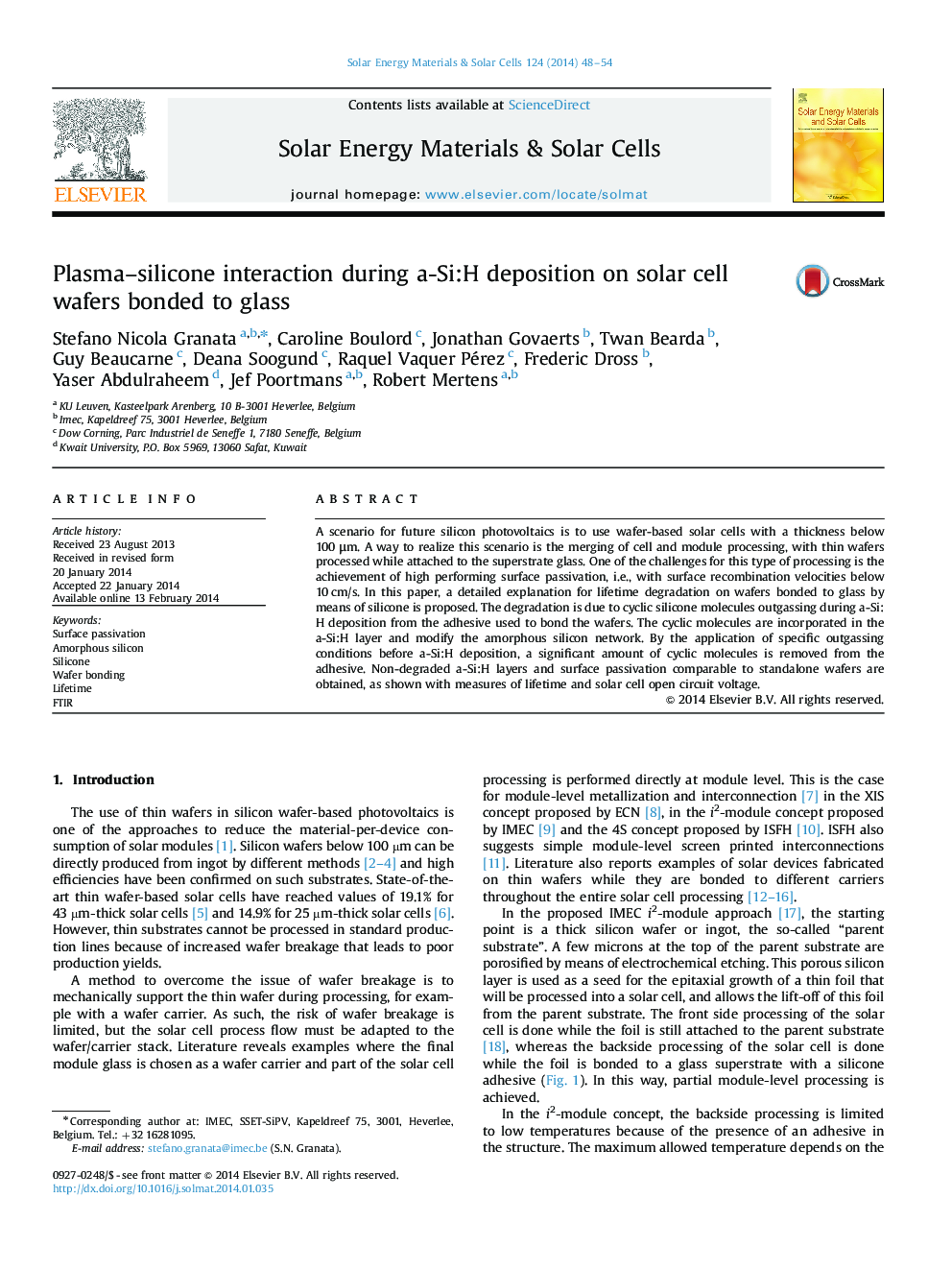| Article ID | Journal | Published Year | Pages | File Type |
|---|---|---|---|---|
| 6535716 | Solar Energy Materials and Solar Cells | 2014 | 7 Pages |
Abstract
A scenario for future silicon photovoltaics is to use wafer-based solar cells with a thickness below 100 μm. A way to realize this scenario is the merging of cell and module processing, with thin wafers processed while attached to the superstrate glass. One of the challenges for this type of processing is the achievement of high performing surface passivation, i.e., with surface recombination velocities below 10 cm/s. In this paper, a detailed explanation for lifetime degradation on wafers bonded to glass by means of silicone is proposed. The degradation is due to cyclic silicone molecules outgassing during a-Si:H deposition from the adhesive used to bond the wafers. The cyclic molecules are incorporated in the a-Si:H layer and modify the amorphous silicon network. By the application of specific outgassing conditions before a-Si:H deposition, a significant amount of cyclic molecules is removed from the adhesive. Non-degraded a-Si:H layers and surface passivation comparable to standalone wafers are obtained, as shown with measures of lifetime and solar cell open circuit voltage.
Related Topics
Physical Sciences and Engineering
Chemical Engineering
Catalysis
Authors
Stefano Nicola Granata, Caroline Boulord, Jonathan Govaerts, Twan Bearda, Guy Beaucarne, Deana Soogund, Raquel Vaquer Pérez, Frederic Dross, Yaser Abdulraheem, Jef Poortmans, Robert Mertens,
